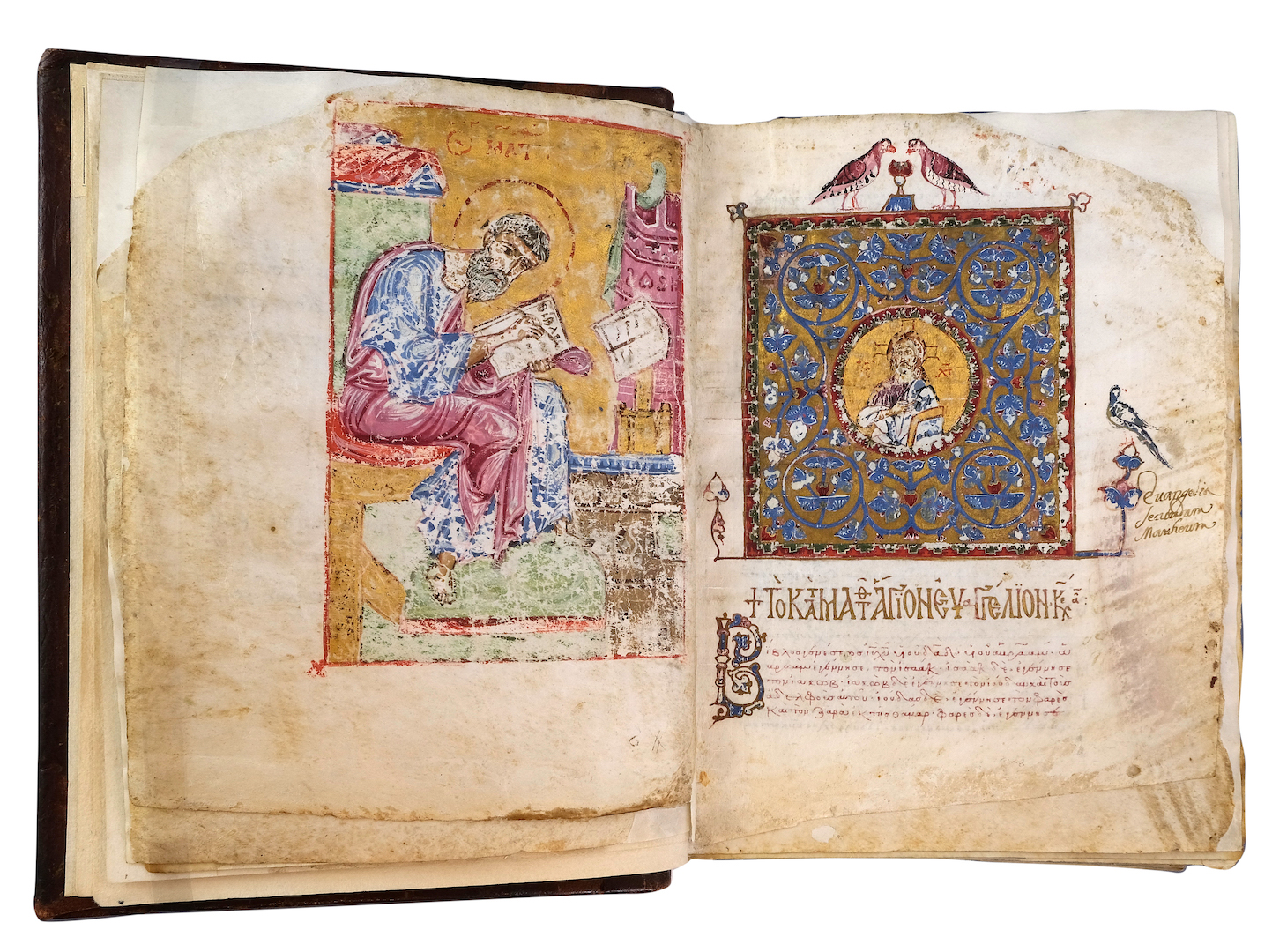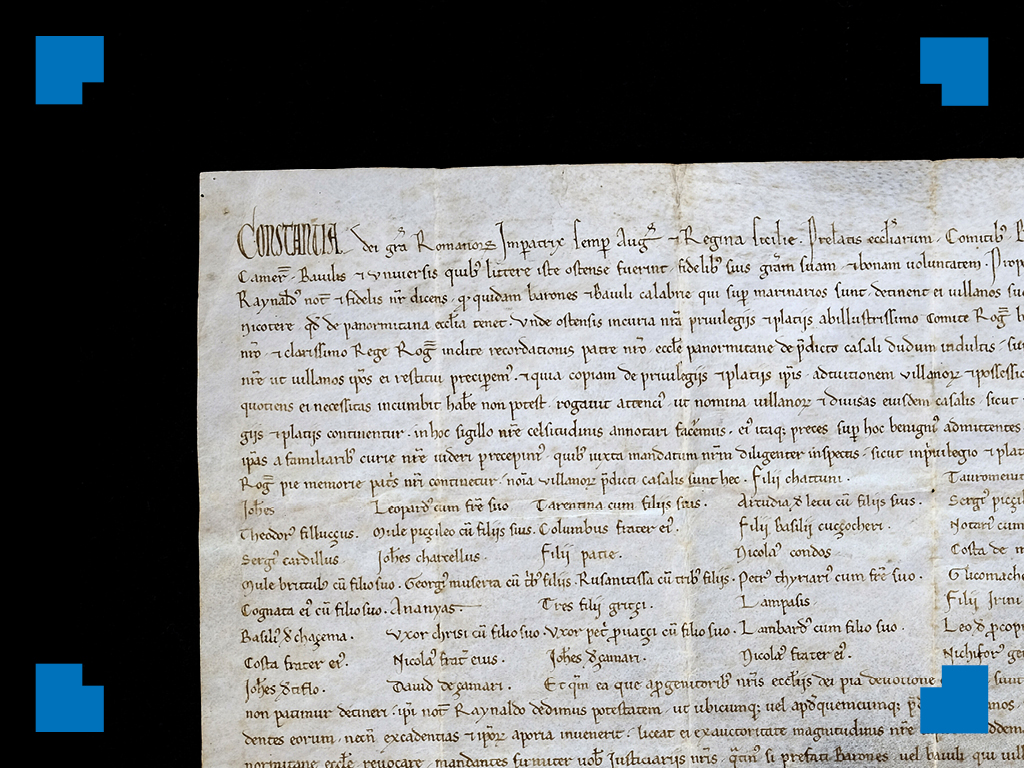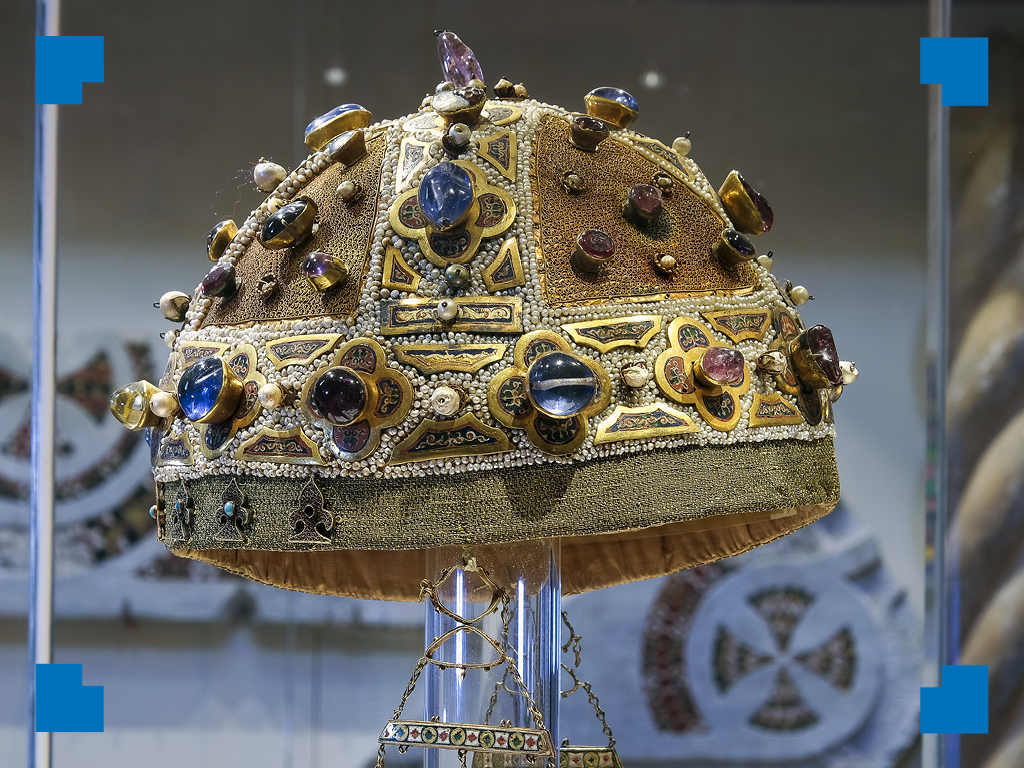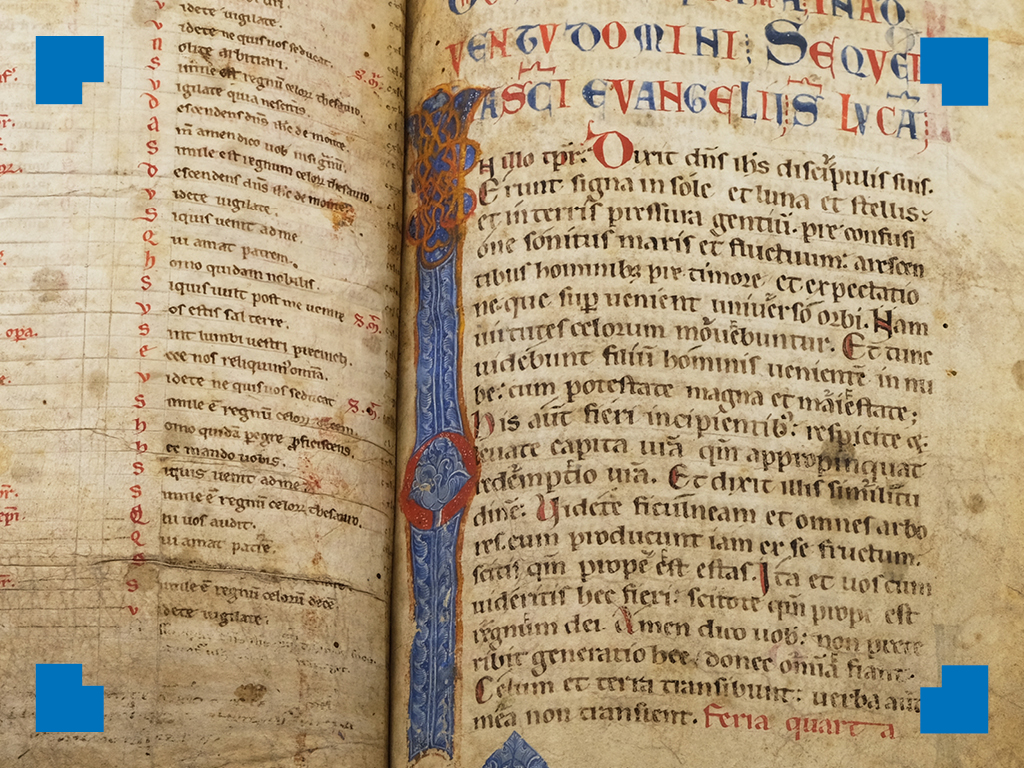
30. Evangeliary of Constance, Empress of the East at Nicaea
Scriptorium of Nicaea or Constantinople, mid-13th c.
Evangeliary of Constance, Empress of the East at Nicaea
ACCORDING TO THE TRADITION, THIS BOOK BELONGED
TO EMPRESS (“QUEEN” IN LATIN) CONSTANCE, WHO WAS
AN ANCHORITE (FROM LATIN “DEVOTING HERSELF TO
DIVINE MEDITATION”) IN THE MONASTERY OF SANTISSIMO SALVATORE.
Parchment manuscript (21,6×16,5 cm)
Palermo, Central Library of the Sicilian Region “A. Bombace”, from the monastery of SS. Salvatore, museum dep. 4.
The Evangeliary (Focus cat. 17) contains two notes of possession from the eighteenth century with the same content, the first in Greek and the second in Latin. These notes link the manuscript to a Constance, queen or empress, nun of the monastery of the Santissimo Salvatore of Palermo, of Basilian rule (follower of St. Basil), from which the manuscript, written entirely in Greek, comes.
For centuries the volume was identified as belonging to Constance of Hauteville who, according to the propaganda against Emperor Frederick II, was a nun and was forced to renounce her vows, taken from the convent to marry forcibly Emperor Henry VI of Swabia.
However, after in-depth studies on the writing and on rich ornaments, contemporary scholars believe that the manuscript was written between Nicaea and Constantinople in the mid-thirteenth century, and that it might have been a wedding gift from John III Ducas Vatatze, Emperor of the East in Nicaea, to his wife Constance of Swabia, natural daughter of Frederick II and his beloved Bianca Lancia.


